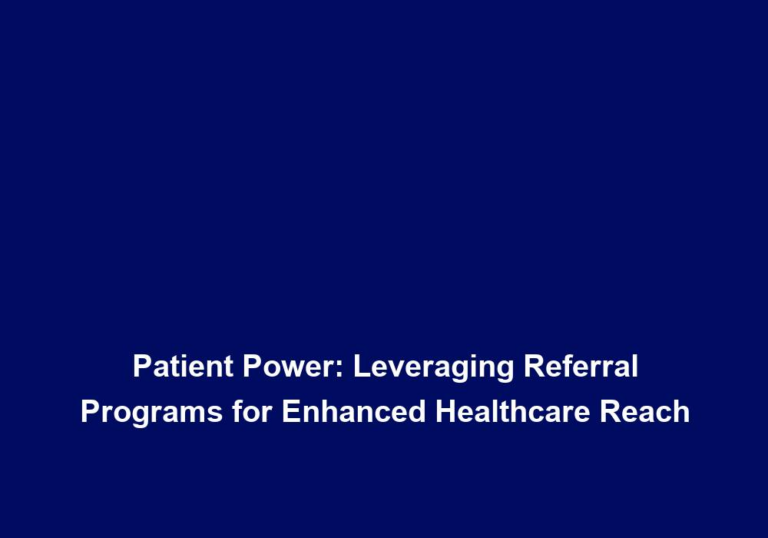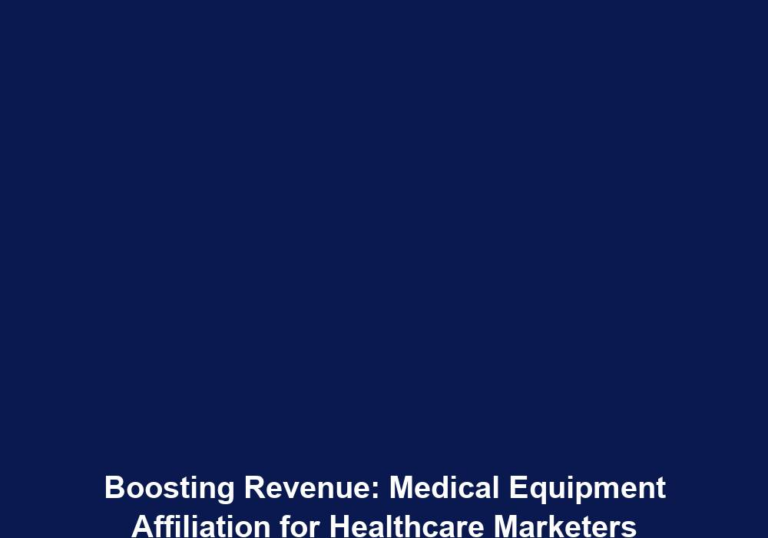Partner and Prosper: Medical Equipment Affiliation in Healthcare Marketing
In the rapidly evolving world of healthcare, medical equipment plays a crucial role in ensuring the well-being of patients and the effectiveness of healthcare services. To thrive in this competitive industry, healthcare organizations are increasingly seeking partnerships and affiliations with medical equipment providers. This symbiotic relationship not only benefits both parties involved but also has a positive impact on patient care and overall healthcare marketing strategies.
The Power of Partnership
Partnering with a reputable medical equipment provider can offer numerous advantages to healthcare organizations. Let’s explore some of the key benefits:
1. Access to Cutting-Edge Technology
Through a strategic partnership, healthcare organizations gain access to the latest and most advanced medical equipment. This enables them to provide superior patient care, enhance diagnostic accuracy, and improve treatment outcomes. By investing in state-of-the-art technology, healthcare providers can stay ahead of the competition and attract more patients.
In addition, cutting-edge technology allows healthcare organizations to offer innovative services and procedures that were previously unavailable. It opens up new possibilities for personalized and precise treatments, ultimately leading to better patient outcomes and satisfaction.
2. Cost Efficiency and Financial Benefits
Partnering with a medical equipment provider can help healthcare organizations reduce costs and achieve financial stability. By sharing resources and pooling purchasing power, both parties can negotiate better deals with suppliers and manufacturers. This translates into lower equipment acquisition costs and maintenance expenses.
Moreover, partnerships often open up opportunities for revenue-sharing or leasing arrangements, allowing organizations to generate additional income. This can be particularly beneficial for smaller healthcare providers who may face budget constraints but still want to offer top-quality services to their patients.
3. Enhanced Reputation and Credibility
Collaborating with a trusted and established medical equipment provider can significantly enhance a healthcare organization’s reputation and credibility. Patients are more likely to trust a facility that is equipped with top-of-the-line technology and partners with reputable brands. This partnership becomes a strong marketing tool, attracting more patients and reinforcing the organization’s commitment to delivering high-quality care.
In addition, partnering with a renowned medical equipment provider can help healthcare organizations build relationships with other industry stakeholders such as insurance companies, research institutions, and regulatory bodies. This further enhances their credibility and opens up doors for collaborations and advancements in the field.
4. Streamlined Operations and Increased Efficiency
A well-planned affiliation with a medical equipment provider can streamline operations within a healthcare organization. By standardizing equipment and adopting interoperable systems, healthcare providers can simplify workflows, reduce errors, and improve overall efficiency.
Standardization of equipment not only ensures smooth integration with existing infrastructure and protocols but also facilitates staff training and knowledge sharing. This promotes seamless collaboration among healthcare professionals, leading to improved care coordination and patient safety.
Moreover, streamlined operations result in reduced wait times, increased patient throughput, and enhanced overall patient experience. This gives healthcare organizations a competitive edge by attracting more patients and improving their reputation in the market.
Successful Medical Equipment Affiliation Strategies
To ensure a fruitful partnership and maximize the benefits, it is crucial to develop a comprehensive strategy. Here are some key considerations:
1. Identify Objectives and Needs
Before seeking a partnership, healthcare organizations must clearly identify their objectives and specific equipment needs. Understanding the existing gaps and challenges will help in finding the most suitable medical equipment provider. Whether it’s upgrading existing equipment or expanding services, aligning objectives is vital for a successful collaboration.
Organizations should assess their current equipment inventory, analyze its performance, and identify areas where improvement is necessary. This will help them prioritize their needs and determine the type of equipment required to achieve their goals.
2. Research and Due Diligence
Thorough research and due diligence are essential when selecting a medical equipment provider. Evaluate the provider’s reputation, expertise, and track record. Look for testimonials and references from other healthcare organizations that have partnered with them.
Assess the provider’s commitment to innovation and ongoing product development. Look for evidence of their involvement in research and development activities, as well as their response to emerging healthcare trends and challenges.
Additionally, verify the provider’s compliance with regulatory requirements and industry standards to ensure patient safety and quality of care. This can be done by checking if the provider holds necessary certifications and licenses required by regulatory bodies.
3. Compatibility and Integration
Compatibility between the medical equipment and existing systems is crucial for efficient operations and seamless integration. Ensure that the chosen equipment aligns with the organization’s IT infrastructure, protocols, and workflow processes. Compatibility issues can lead to productivity setbacks, increased costs, and compromised patient care.
Consider factors such as data exchange capabilities, interoperability with other devices, and integration with electronic health record systems. It is important to involve IT professionals and clinical staff in the decision-making process to ensure smooth integration and workflow optimization.
4. Long-Term Support and Maintenance
Reliable technical support and maintenance are vital for the sustained performance of medical equipment. Partner with a provider that offers comprehensive after-sales support, including training for staff, troubleshooting assistance, and readily available spare parts.
Regular maintenance and servicing should be included in the partnership agreement to minimize downtime and maximize equipment longevity. It is important to establish clear communication channels and response times for technical support requests to avoid disruptions in patient care.
5. Continuous Improvement and Innovation
Choose a medical equipment provider that demonstrates a commitment to continuous improvement and innovation. The healthcare industry is constantly evolving, and new technologies emerge regularly. Partnering with a provider that embraces innovation ensures access to cutting-edge equipment and keeps the organization at the forefront of advancements in patient care.
Look for providers that invest in research and development, participate in industry conferences and events, and collaborate with academic institutions and healthcare experts. This ensures that the equipment provided is up to date with the latest standards and incorporates the most advanced features and functionalities.
Conclusion
Partnering with a medical equipment provider can bring numerous benefits to healthcare organizations, ranging from access to advanced technology and cost efficiency to enhanced reputation and increased efficiency. By carefully selecting the right partner and developing a comprehensive strategy, healthcare organizations can optimize patient care, strengthen their market position, and prosper in an ever-competitive healthcare industry.







